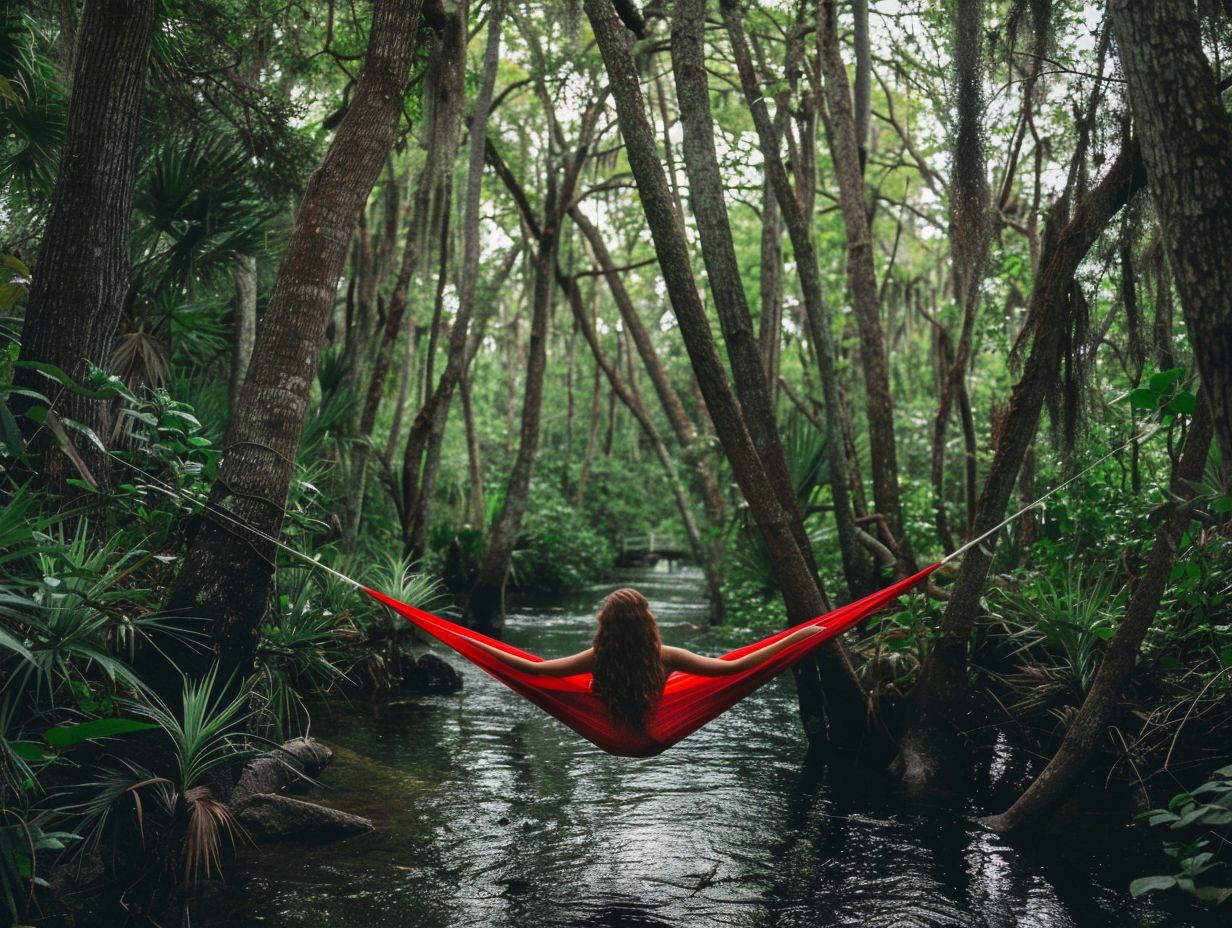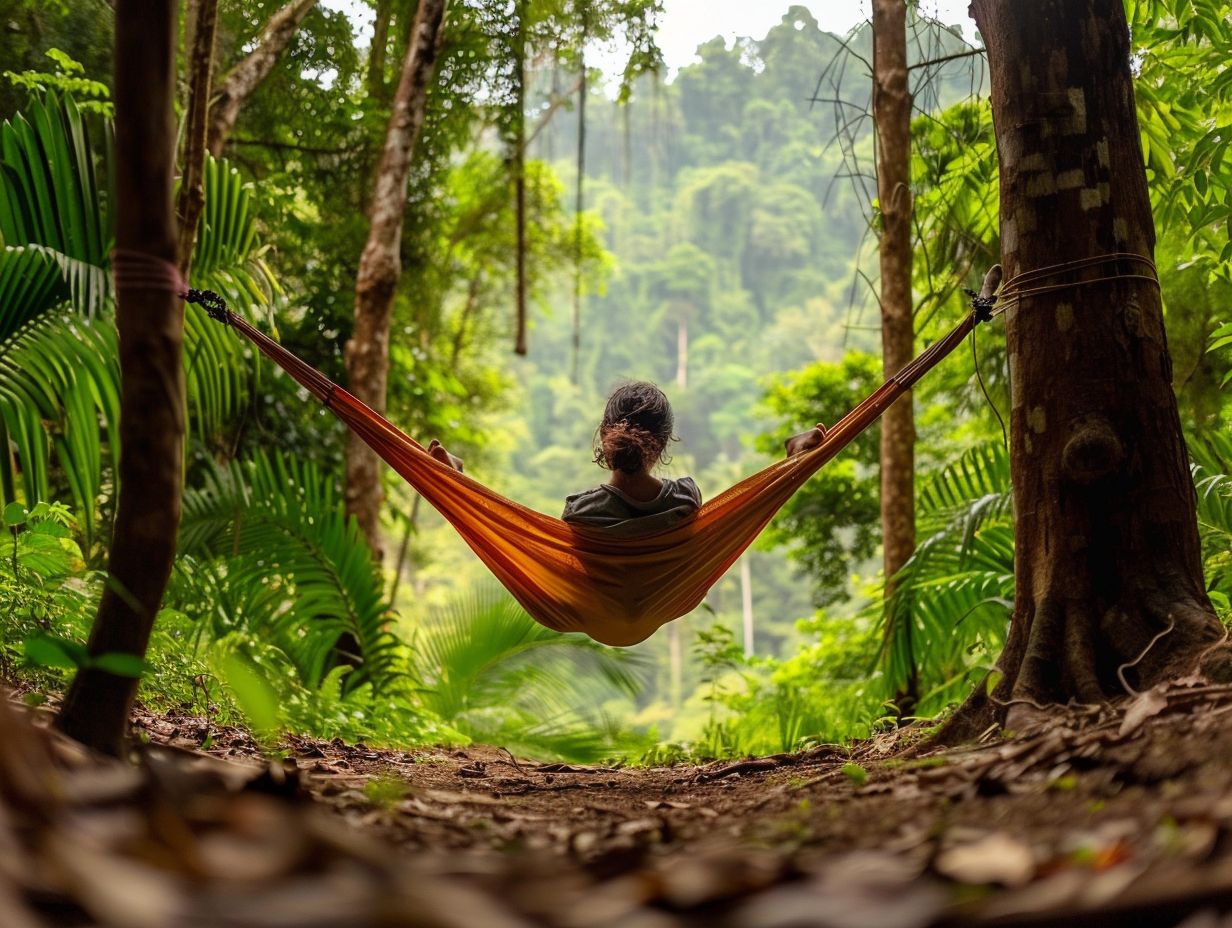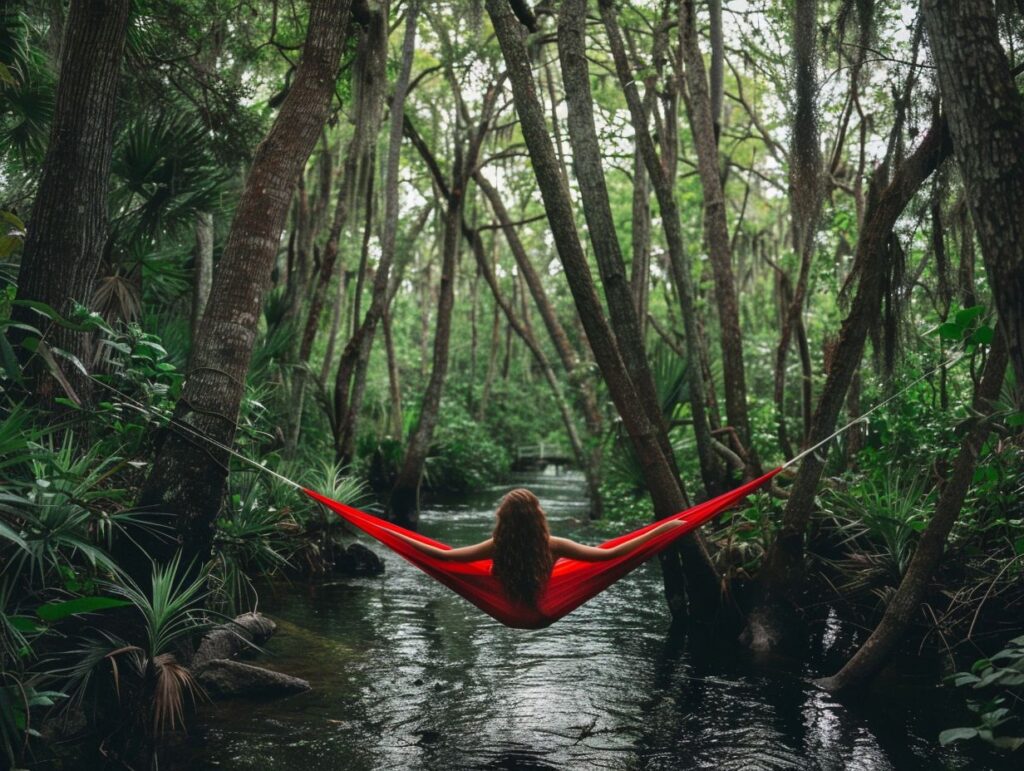Are you looking to switch up your camping experience and try something new? Hammock camping might be just the adventure you’re looking for.
In this comprehensive guide, we will explore the reasons why hammock camping is a popular choice among outdoor enthusiasts. We will also provide you with step-by-step instructions on how to set up a hammock for camping, what essential gear to bring, and valuable tips to make your hammock camping trip a success.
So, grab a cup of coffee and let’s dive into the world of hammock camping!
Key Takeaways:

- Choose hammock camping for its comfort, versatility, and lightweight compactness.
- Properly set up your hammock by selecting a suitable location, hanging it correctly, and adjusting the tension for optimum comfort.
- Essential items for a hammock camping trip include straps, quilts, bug net, tarp, sleeping gear, cooking equipment, and a first aid kit.
Tips for Hammock Camping
To optimise the hammock camping experience, it is advisable to adhere to various tips and best practices that guarantee comfort, safety, and overall satisfaction when utilising hammock-specific equipment and gear.
1. Practice Setting Up Your Hammock Before Your Trip
Conducting a trial setup of your hammock and equipment before embarking on your camping trip can greatly enhance the overall camping experience. This preparatory step not only allows for familiarisation with the setup process but also facilitates the inspection of secure attachments and comfortable adjustments.
By conducting a practice run at home or in a local park, one can ascertain the proper placement and functionality of all components.
It is essential to focus on the suspension system during this trial, ensuring that it is firmly affixed to robust trees or poles and adjusted to the appropriate height for optimal comfort. Testing the tension of the hammock fabric is crucial to prevent any sagging that could result in discomfort during the actual camping adventure.
2. Choose the Right Hammock for Your Needs
Selecting the appropriate hammock tailored to one’s individual needs is paramount in ensuring a comfortable and gratifying camping venture.
When contemplating various types of hammocks, a deliberate assessment of their distinct attributes is imperative. Conventional rope hammocks present a timeless design and are commonly crafted from cotton or polyester to enhance durability.
Conversely, camping hammocks are characterised by their lightweight nature and compact size, rendering them ideal companions for backpacking excursions. Those inclined towards comfort might find quilted hammocks, featuring additional padding, to be particularly inviting.
The dimensions of the hammock play a pivotal role – single hammocks cater well to solitary outings, while double hammocks offer ample space for communal use. The choice of fabric material is also a critical consideration; nylon hammocks, renowned for their rapid drying capabilities, are especially suited to humid environments.
By meticulously evaluating these factors in alignment with personal preferences and camping methodologies, individuals can ascertain the optimal hammock selection to enhance their outdoor escapades.
3. Pack Light and Compact
Ensuring a successful and stress-free camping trip, particularly when utilising a hammock setup, hinges on the principle of packing light and compactly. By opting for lightweight camping gear and meticulously organising one’s pack, individuals not only alleviate physical strain but also enhance mobility and flexibility during outdoor excursions.
Prioritising multi-functional items and essential supplies such as food, water, and shelter is crucial in the selection process. The use of compression sacks or packing cubes can facilitate space-saving benefits and maintain orderly storage.
It is imperative to acknowledge that reduced weight translates to increased energy levels for exploring and savouring nature’s splendour, unencumbered by unnecessary bulk.
4. Consider the Weather and Terrain
When preparing for a hammock camping trip, it is essential to consider the weather and terrain to establish a safe and comfortable setup.
Ahead of embarking on the trip, it is advisable to review the weather forecast, particularly if there is rain expected. It is recommended to bring a rainfly or tarp to shield the hammock from becoming saturated. In colder climates, it is prudent to pack insulation layers such as thermal blankets or sleeping bags.
When choosing a campsite, it is wise to select higher ground to mitigate the risk of flooding during intense rainfall. In colder environments, seeking sheltered locations such as groves or natural windbreaks can minimise exposure to severe winds.
5. Use a Sleeping Pad
Enhancing the sleeping experience in a hammock can be achieved by utilising a sleeping mat, which provides additional insulation and comfort. This not only introduces a layer of warmth beneath the sleeper but also offers cushioning to alleviate pressure points that may cause discomfort during the night.
Various types of sleeping mats are available, including self-inflating, air, and foam mats, each possessing unique advantages. Self-inflating mats are characterised by convenience and offer commendable insulation, whereas air mats are lightweight and easily adjustable. Foam mats are known for their durability and affordability.
When selecting a sleeping mat, it is advisable to consider factors like weight, insulation properties, comfort level, and packability to ensure that it aligns with the individual’s specific requirements for a peaceful night’s rest.
6. Stay Hydrated and Bring Enough Water
Maintaining proper hydration and ensuring an ample supply of water are paramount for optimal health and well-being while embarking on a hammock camping trip.
To secure a sufficient water reservoir, it is advisable to consider the acquisition of a water filter or the inclusion of purification tablets in your equipment. These devices help to facilitate the acquisition of drinkable water from natural sources such as streams or rivers.
When planning your itinerary, it is essential to include considerations about the duration and location of your journey to determine the necessary daily water amount.
It is crucial to recognize that high temperatures and physical exertion increase the body’s need for hydration, requiring a cautious approach by carrying extra water. Sufficient hydration is essential for enhancing the enjoyment of your outdoor adventure.
7. Follow Leave No Trace Principles

Adhering to Leave No Trace principles is essential for the conservation of the natural environment and for ensuring a positive impact on the camping experience.
These principles underscore the significance of preserving nature in its undisturbed state and safeguarding its beauty for the benefit of future generations.
In the context of hammock camping, there are specific measures that can be implemented to reduce the environmental impact. It is advisable to always select designated areas for setting up hammocks to prevent harm to delicate vegetation.
Additionally, utilising wide straps to secure hammocks is important to avoid causing undue harm to trees. Care should be taken when hanging food or rubbish to prevent attracting wildlife. Furthermore, it is crucial to ensure that all rubbish, including food remnants, is packed out to maintain the cleanliness of the area and promote the safety of wildlife.
Frequently Asked Questions
What equipment do I need for hammock camping?
For hammock camping, you will need a hammock, suspension straps, a tarp, and a bug net (depending on your location). You may also want to bring a sleeping pad, sleeping bag, and a pillow for added comfort.
How do I set up a hammock for camping?
To set up a hammock for camping, find two trees or sturdy objects that are about 10-15 feet apart. Wrap the suspension straps around the trees and clip the hammock onto the straps. Adjust the straps to achieve your desired level of tension and then hang your tarp and bug net (if using) above the hammock.
What are some tips for a comfortable hammock camping experience?
Some tips for a comfortable hammock camping experience include choosing a flat and level spot for hanging your hammock, using a sleeping pad or underquilt to insulate your hammock, and bringing extra layers in case the temperature drops at night.
Is hammock camping safe?
Yes, hammock camping can be safe as long as you take proper precautions and use proper equipment. Make sure to inspect your hammock and suspension straps for any signs of wear before each use, and always properly secure your hammock to avoid any accidents.

